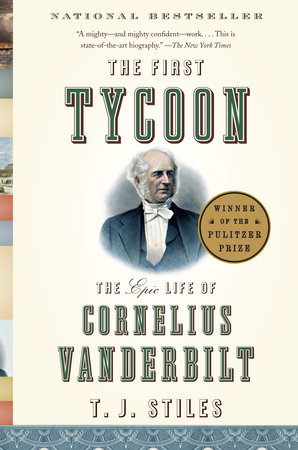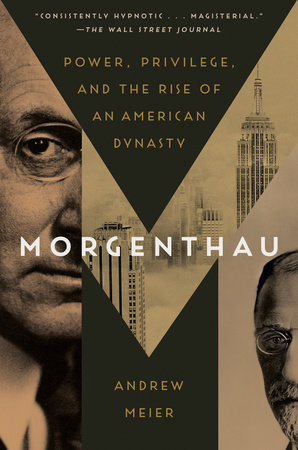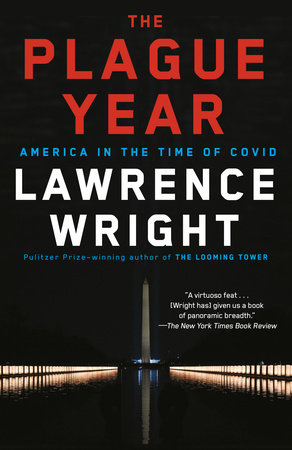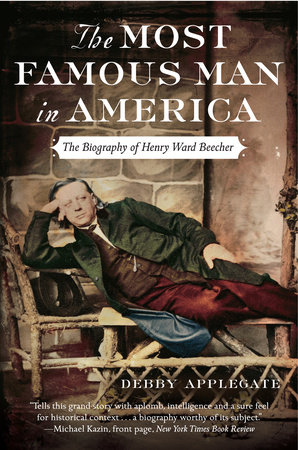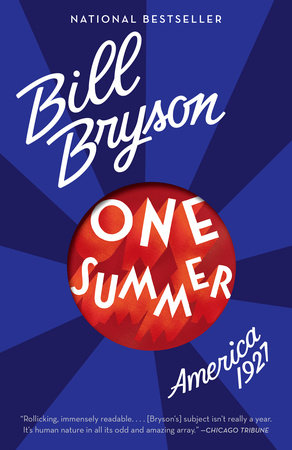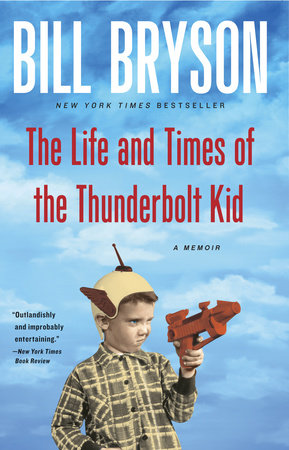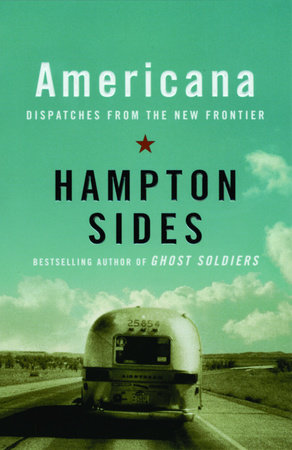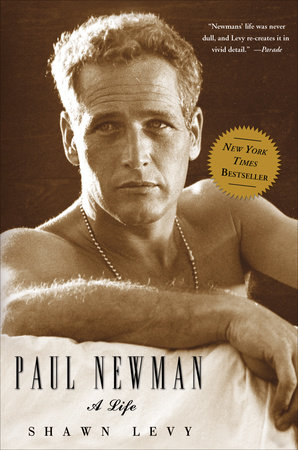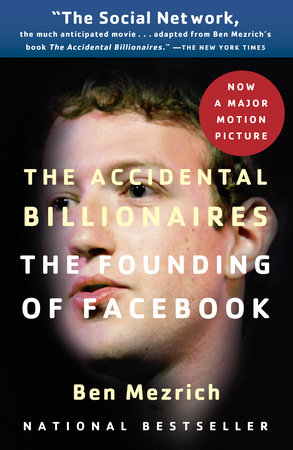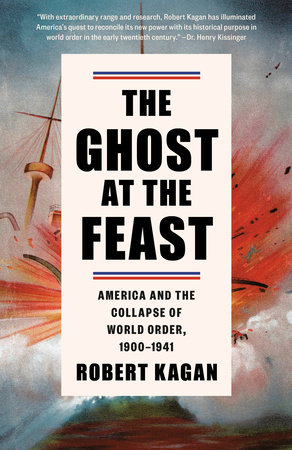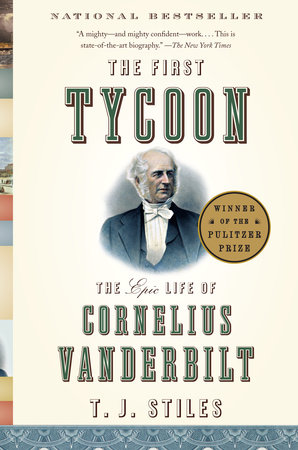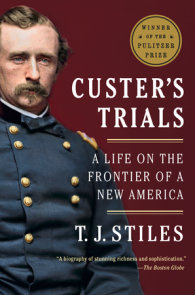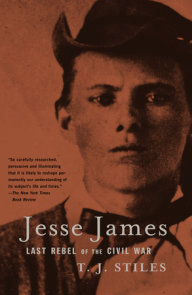Author Q&A
Q: Your last book was a biography of Jesse James. What drew you to Cornelius Vanderbilt as your next subject?
A: I was drawn by who he was as a person, the lack of writing about him, and the historical themes that defined his life.
Like Jesse James, Vanderbilt was man of action—decisive, dramatic, and always interesting. He courted physical danger, fought high-stakes financial battles, and always set the terms of his existence. Like Jesse James, Vanderbilt has not been the subject of much serious research. And like Jesse James, Vanderbilt opened a window on the making of modern America. Vanderbilt was central to the rise of the corporation, the emergence of Wall Street, and the birth of big business. His was a dramatic life played out on an enormous stage.
Q: How long have you been working on this book and what kind of research went into it?
A: I worked on it for more than six years. My research was challenging because Vanderbilt kept no diary, preserved no letters, and left behind no collection of papers. Second, the last serious biography about him was written in 1942. The increasing digitization of newspapers and Congressional documents helped, but I did most of my work the old-fashioned way, digging through archives and sitting in front of microfilm readers. My biggest discovery came when I stumbled upon the Old Records Division of the New York County Clerk’s Office; I spent months there going through original lawsuit papers from as early as 1816. I uncovered entire episodes of Vanderbilt’s life that no one ever suspected—fistfights, steamboats ramming each other, inside trading and noncompetition agreements, details about his physical office and epic tales of betrayal. I also focused on Vanderbilt’s associates and rivals, and found priceless letters about him in their papers. Of course, I spent months more going through the papers of his various railroad corporations at the New York Public Library. I found so much new material that I decided to include a lengthy bibliographical essay.
Q: Vanderbilt’s was such a BIG (and long) life. His career began before the War of 1812 and lasted until the end of Reconstruction. As you write, it "spanned a period of breathtaking changes, from the days of George Washington to those of John D. Rockefeller." How did you even begin to go about charting a course through this life?
A: This, surprisingly, was the easiest part. His life fell into three clear segments: His decades as a steamboat entrepreneur in New York’s rivers and coastal waters; his roughly dozen years as an international steamship tycoon; and the final dozen or so years of his life, when he created a railroad empire. Because so much of his business life consisted of combat against economic enemies, the chapters were readily defined by his battles, which rarely lasted more than a year or two each.
Q: What is so stunning about Vanderbilt (among many things) is that his accomplishments were so steady for so long. As you write, “One person cannot move the national economy singlehandedly—but no one else kept his hands on the lever for so long or pushed so hard.” What accounted for his ability to remain on top in so many arenas?
A: Vanderbilt was a master of both strategy and tactics. Until late in life, he had a close personal grasp on the technical details of his business operations, which he used to obtain every advantage over an opponent. He could cut costs more effectively than anyone, and understood how to, for example, set the times for steamboat departures or price his fares in order to undercut his foes most effectively. When he began to relinquish operational control to subordinates, he demanded the same attention to savings and competitiveness. He also had a farseeing understanding of the overall nature of the transportation business—where passengers were flowing and why, what routes or railroads offered permanent advantages—and picked his battles carefully. Yet he also had two overlooked qualities: He was an expert at making the most of an enemy’s misstep, and he could be a perfect corporate diplomat. He could exploit a momentary mistake by a foe and turn it into a career-changing development. He also cherished his reputation as a man of his word, and his honesty won him respect.
Q: You say that as a railroad tycoon Vanderbilt made his greatest impact not by laying new track but by forging the first giant corporation in American history. What was so ground-breaking (and history making) about the New York Central & Hudson River Railroad?
A: There are two answers: Its sheer size, and its status as a landmark in the transformation of corporations.
At the time of the Civil War, there were only a handful of corporations with an official, or par, value of $10 million or more. All were railroads, with most manufacturing firms valued at $1 million or (usually) much less. When Vanderbilt merged the New York Central and Hudson River Railroads in 1870, he created an entity with a capital stock worth nearly $100 million, far larger than all but one or two other railroads. It marked the birth of big business: It employed thousands, conducted operations from one end of New York to the other, and loomed as the largest single enterprise in virtually every major city in the state.
But it also marked an end to a longstanding idea of what the corporation was for. They were devices established by state governments to encourage public parties to invest their capital in public projects; the first railroads, for example, had been chartered to serve local areas. Vanderbilt effectively ended the fragmented, localized nature of the railroad system, and he turned corporations into straightforward business organizations, serving shareholders’ interests.
Q: You debunk a lot of myths about Vanderbilt in this book. Why do you think there is so much mythology surrounding his life? What are some of the biggest misconceptions?
A: Vanderbilt was a paradox. He was a taciturn man, given to secrecy, and, as I said, he left no collection of papers. On the other hand, he was probably the first celebrity businessman. The press covered his personal life, writing about his grand tour of Europe, his expansive race horses, his personal harness races against all comers in upper Manhattan, his summers in Saratoga Springs, his second wedding. In an age when journalists abided by few professional standards, they solved their need for copy about this fascinating but close-mouthed man by simply making things up about him. Rumors flourished on Wall Street in particular, and reporters often printed them as fact. Later writers too often accepted those things as fact.
The misconceptions about him abound. A few examples of flatly false ideas: That he was illiterate; chewed tobacco and spat on his hosts’ carpets; disinherited most of his children; patronized prostitutes; caught syphilis and went insane from it. He did know Victoria Woodhull and Tennessee Claflin, but he had nothing to do with their famous first-female-run brokerage on Wall Street, nor did he sponsor their radical newspaper. His family did not step in to prevent him from marrying Claflin, nor did they arrange his second marriage. He was not an outcast among New York’s social elite. It took decades, but he gradually won the respect of the patrician class, and ended his days as a respected member. Most important, he tempered his famously combative methods as a railroad tycoon. He did not engage in business wars of conquest, but practiced patient diplomacy with neighboring lines, fighting and buying up his foes only as a last resort.
Q: What are the least known periods of his life that you explore in The First Tyco on? What did you discover that most surprised you?
A: Vanderbilt’s life has always been more obscure the earlier you go. While I found much new information at every stage, I found the most in the first two-thirds of his life. Through the lawsuits of the Old Records Division of the New York County Clerk’s office and the letters of corporate officials, I was able to largely rewrite the story of his first career as a steamboat entrepreneur. I discovered, for example, that he became a railroad president fifteen years before most historians thought he had anything to do with railways—and that he won that position through cunning and largely secret warfare. I learned that his most famous enemy, Daniel Drew, was his secret partner for most of their lives. I discovered information in legal records and the National Archives that transformed one of the most famous episodes in his life, his war against William Walker, who conquered Nicaragua in 1855. I uncovered much new information about Vanderbilt’s family, especially his gambling-addicted son Corneil. What I found allowed me to rewrite the standard portrait of the famous Erie War of 1868, an epic battle against Drew, Jay Gould, and Jim Fisk for the Erie Railway. Perhaps most surprising, though, was my discovery that Vanderbilt adapted his methods, even his personality, when he became a railroad king, pursuing statecraft rather than business warfare. Actually, this just scratches the surface.
Q: Is it possible to contextualize Vanderbilt’s wealth in modern equivalent figures?
A: I am convinced that historical dollar amounts cannot be converted honestly through an inflation calculator. They are irreducible facts that can be understood only in their contemporary context. The economy was not a balloon that inflated over time; in the nineteenth century it was lumpy, with partially integrated markets, periods of rapid growth and dramatic increases in economic complexity, and long periods of deflation. I have my doubts about the accuracy of historical GDP figures, which are often used in comparisons.
On the other hand, the money stock was more accurately calculated, and it does provide some context. Shortly before Vanderbilt died, the comptroller of the currency calculated the combined total of all currency, coin, and bullion in circulation at $900,676,194—just $19.77 for each of an estimated 45,550,000 Americans. If Vanderbilt had been able to liquidate his $100 million estate to American purchasers at full market value (an impossible task, of course), he would have received $1 out of every $9. If demand deposits are included in the calculation, he still would have taken $1 out of every $20. By contrast, Forbes magazine calculated on September 17, 2008 that Bill Gates was the richest man in the world, with a net worth of $57 billion. If Gates could have liquidated his entire estate (to American buyers) at full market value at that time, he would have taken one out of every $138 circulating in the American economy.
Even this comparison understates the disparity between the scale of Vanderbilt’s wealth and that of anyone in the twenty-first century. The calculation for 2008 uses the Federal Reserve’s M2 figure, the most literal equivalent to the 1876 comptroller’s report; the money supply in the far more complex modern economy is generally thought to include a far broader range of financial instruments, a tally referred to as M3. And Vanderbilt dominated in railroads, which outstripped every other sector of the economy in size and importance in a way that no one industry does today.
Q: When did the term "Robber Baron" first become attached to Vanderbilt?
A: In 1859, The New York Times compared Vanderbilt to the medieval German robber barons on the Rhine, which was the first use of that metaphor. It didn’t use the precise phrase “robber baron,” but it came into common use in the 1860s.
What I think is interesting is how different the original meaning of the metaphor was from its modern definition. Today “robber baron” is applied to industrial monopolists and financiers who corrupt government. What I discovered, though, is that the Times first used it in a sense that was very specific to that time, and makes little sense to us now. It reflected an old strain of thought in the Whig Party, which favored government-led economic development and looked askance at competition, seeing it as anarchic and destructive. The Times criticized Vanderbilt for being too competitive against “legitimate” enterprises—specifically, Pacific Mail, a federally subsidized steamship company, which paid him a large sum to protect its monopoly on a line to California. The politics of the economy were radically different before the Civil War.
Q: How influential was Vanderbilt in making New York America’s financial capital?
A: Vanderbilt contributed enormously to New York’s rise to financial preeminence. First, as a leader of the transportation revolution, he cut fares and improved speed and service in a succession of routes that centered on Manhattan. As an early steamboat and railroad entrepreneur, he made major strides in developing the city’s connections to other major centers—first Philadelphia, then Albany and the Erie Canal, then Boston and the factory districts of New England. As a steamship tycoon, he created lines that linked New York to Europe, and especially to San Francisco, which shipped much of its gold to Manhattan, where it amplified New York’s financial strength. As a railroad president, he built infrastructure and cut costs on the city’s rail links to the West.
Second, he emerged as a major New York-based financier as early as the 1830s, lending money to other capitalists, investing in the stock market, and, most important, revolutionizing finance with his stock operations. He radically increased the capital stock of his companies, a practice derided at the time as “stock watering” but in fact foreshadowing the stock splits that became common in later years. Throughout, he heightened the financial sophistication of corporate structure and the financial markets.
Q: Can you talk a bit about the impact of the Civil War on Vanderbilt and his role in shaping key events of the war? Also his personal role in Central America?
A: Vanderbilt was deeply patriotic. During the Civil War, he tried to donate his largest steamship, the Vanderbilt, to the Union navy, though he was turned down by the prickly secretary of the navy, Gideon Welles. But when the Confederate ironclad Virginia (a.k.a. Merrimack) went on its rampage, Lincoln personally asked for Vanderbilt’s help. The Commodore outfitted the Vanderbilt with a ram and took it to the scene of the battle, where it bottled up the Virginia. He was then able to donate the ship, worth nearly $1 million. He refitted it as a cruiser to hunt for the Confederate commerce raider Alabama, which targeted Vanderbilt’s California line in retaliation. Vanderbilt also outfitted a major amphibious expedition to New Orleans. Congress gave the Commodore (an informal title) a gold medal in recognition of his efforts and the gift of his steamship.
I was surprised by how closely Vanderbilt worked with the highest levels of the federal government in the 1850s and ‘60s. During the California gold rush, the main channel of commerce and travel between the west and east coasts consisted of steamship lines to Panama, with a land crossing of the isthmus (a railroad across it was completed by the middle of the 1850s). Vanderbilt started a rival line to Nicaragua, which was farther north, and a transit company to carry passengers across that country. These transit operations were probably the first major overseas investments by American corporations, and every president considered them of the highest strategic importance to the United States. In 1855, an American military adventurer named William Walker, who I referred to earlier, essentially conquered Nicaragua, took away the transit rights from Vanderbilt’s company, and gave them to his business rivals. Vanderbilt intervened in a war between Nicaragua and its neighbors, sending gold and a secret agent to lead a commando raid from Costa Rica that cut Walker off from his reinforcements.
Q: Beyond the realm of business, you delve very deeply into Vanderbilt’s personal life and family. You write, "The image of Vanderbilt as the man of force is powerful, so much so that it can easily be forgotten that he was a man, emotional and complicated. Here and there, his vulnerabilities and sensitivities poke though the cracks of the stony historical record." What did you most hope to reveal about Vanderbilt the man?
A: The most important aspect of Vanderbilt as an individual that I hoped to reveal was his simple humanity. For all his strength of will, he could be hurt, confused, in doubt. The stereotype of Vanderbilt is that of a domineering, maddeningly consistent man. When I dug into the archives, though, I found contradictions, inconsistencies, and vulnerabilities that I had never suspected. Though he was fierce in business combat, and brawled in more than one fistfight, he eventually proved himself a consummate corporate diplomat, patient and eager to find common ground. Though he was often hard and demanding with his children, he expressed great warmth for his daughter-in-law Ellen Williams Vanderbilt; her early death deeply depressed him. She was married to Corneil, Vanderbilt’s second son, who was addicted to gambling and epileptic; Vanderbilt’s first wife, Sophia, referred to his attitude toward Corneil as “stubborn inconsistency.” He was by turns encouraging of Corneil’s attempts to reform himself and angry at his thefts and schemes to raise gambling money. He was quite in love with his second wife, Frank, and apologized to her for his outbursts during his fatal illness. He loved his horses, and was hurt by the death of his prize trotter, Mountain Boy, in the “epizootic” of 1872. But he had difficulty managing his own emotional life, and was frustrated by situations that he could not control with decisive action.
Q: You book-end this biography with the court case that transpired after Vanderbilt’s death in which his surviving family members battled bitterly for rights to his empire. Why did you start and close with this case?
A: The trial over Vanderbilt’s will was important because it was a fight to define who he was, and it is the source of much of the information about his private life that has circulated in years since. Unfortunately, a good deal of that information is misleading or simply false. It’s important to remember that one daughter was trying to show that Vanderbilt was not competent to have written his will, so as to leave the bulk of his fortune to his oldest son, William; her side’s so-called evidence was put forward by a paid advocate, and was not impartial. Many of the witnesses called to testify to this point were frankly unbelievable. Even worse, in several cases the daughter’s attorney called a witness and declared what the witness would say; the judge then ruled out any testimony. Yet many writers have cited what the lawyer said, as if it came from the mouth of a real witness.
Given the focus on Vanderbilt’s state of mind, the testimony created a distorted impression. For example, it highlighted Vanderbilt’s interest in Spiritualism. He attended a number of séances, and attempted to contact dead relatives and friends. What the trial did not highlight was the fact that this was quite normal; the post-Civil War years were the height of Spiritualism in American culture, when it was widely practiced. Furthermore, even evidence at the trial shows that Vanderbilt did not rely on guidance from the spirits for his business decisions, but appears to have sought comfort from the dead. Spiritualism was a very small part of his life, yet the exaggerated impression created by the trial has led many to depict it as central to his existence.
Q: Vanderbilt very much wanted his own life and fortune to be the start of a dynasty. Did he get his wish?
A: Yes and no. He did found a family that remained extraordinarily wealthy for many generations. They reigned over the new aristocracy of the Gilded Age, and a few are still familiar names. Journalist Anderson Cooper, for example, is a direct descendant of Commodore Vanderbilt. Going farther back, Harold Stirling Vanderbilt, who died in 1870, won the America’s Cup in yacht racing and popularized contract bridge. Consuelo Vanderbilt, the Commodore’s great-granddaughter, became the Duchess of Marlborough with a grand wedding in 1895. But Vanderbilt’s son and heir, William Henry Vanderbilt, sold a controlling stake in the railroad empire to a financial syndicate organized by banker J.P. Morgan—though the Vanderbilts continued to serve as chief executives. As America’s first big business, though, railroads were the first to mature and fade, and the New York Central has long since disappeared.
Q: Throughout the book, you highlight Vanderbilt’s role in the making of the modern idea of economic regulation. You also write, "The Commodore’s life left its mark on Americans’ most basic beliefs about equality and opportunity." Where in our modern institutions do you think his legacy is most apparent?
A: Vanderbilt early on voiced a political philosophy rooted in radical Jacksonianism. He believed in individual equality, in the right to compete freely. He denounced monopolies and corporations. This strain of thought remains a key part of American values. Yet he ended his life at the pinnacle of an incredibly unequal society, the master of a giant corporation that overshadowed almost every other business in America. That late-life transformation strongly influenced the new acceptance of government regulation that arose after the Civil War. I don’t think so much that Vanderbilt’s legacy can be seen in our institutions as much as our economic culture—the rise of the modern idea that government should intervene to regulate large businesses, and redress the balance of wealth and power in society.
Q: The Panic of 1873 was the greatest economic disaster in a century. Not only did Vanderbilt survive it but he took advantage of it. What about how Vanderbilt survived that crisis (and others) might be applied to our present circumstances?
A: The Panic of 1873 was the fourth major panic that Vanderbilt lived through. By the time it struck, he had absorbed the lessons of the previous three: Be prepared. He paid attention to the warning signs in 1872 and early 1873, and began to reduce his own exposure. By the time the panic hit, he held no stock on margin, and had repeatedly told his family and inner circle to stop speculating by buying stocks on credit. As president of the New York Central & Hudson River Railroad, he carried out a major building program, but calculated the costs and benefits with conservative figures, without counting on a continuing boom. He protected his core business from the weaknesses of connecting lines he also owned by delaying plans for consolidating them, choosing instead to keep them organizationally separate. This is why he was in a position to take advantage of falling stock prices and buy control of important companies during the crisis. Having learned to anticipate trouble, he learned to take seriously the indications of approaching trouble, and had a healthy reserve of cash, as did his corporations.
Q: What do you think Vanderbilt would have to say about our current economic climate; its root causes as well as the ever increasing bail-outs of giant corporations?
A: When the Panic of 1873 hit, Vanderbilt gave an immediate analysis to a newspaper reporter that virtually describes the current situation. The problem was asset inflation: a speculative bubble (in his case, railroads, in our case, real estate) that tamped down skepticism about the value of securities issued by overvalued companies (or, in our case, mortgage-backed securities based on shaky home loans). Eager to ride the rising wave, banks in New York marketed the securities abroad, giving a stamp of approval, much as they have done with mortgage-backed securities today. In other words, Vanderbilt would have understood the root causes of our crisis, despite the great differences in the economy between then and now. And, though he usually looked askance at government intervention, the seriousness of the situation might have led him to approve of strong action. It’s hard to say, because he denounced subsidies, yet after the Panic of 1873 he also urged the federal government to pump new money into the economy. In any case, he would have had a sophisticated grasp of our conundrum.
Q: Now that you know so much about the man and his life what do you think are the key forces—public and private—that led him to become the first tycoon?
A: What made Vanderbilt so successful is also what makes him so appealing as a subject for a biography. He had an unerring sense for finding the vital center of the American economy. His life is a tour of the events and developments that made the United States the world’s great economic power. During his lifetime, transportation was the most important sector; he not only concentrated in the field, he consistently grasped control of the most important channel of commerce at every stage.
On a personal level, he combined technical mastery with strategic vision with an ability to exploit momentary advantages in ways he could not have predicted at the outset. He was insightful, demanding, exacting, yet—this is key—consistently honorable. He worked hard to build a reputation as a man of his word. He went to great lengths to punish betrayal, yet often came to terms with his foes. Perhaps most important was his unfailing ability to cut costs. He once said that if he could not run a ship or a railroad alongside a rival, and do it for twenty percent less than it cost his competitor to operate, he would close up business and retire. He never had to.
Q: Your own family history recently made national news when it was discovered, at The Smithsonian in Washington, DC, that one of President Lincoln’s watches contained a secret inscription from your great-great grandfather. That must have been pretty exciting for you not only as a family member but as a historian who has written extensively about the Civil War. How do you feel about this news and what do you make of all the attention it received?
A: The news accounts floored me. I never expected this favorite family story, one I never quite believed, to enter national mythology. My great-great-grandfather, Jonathan Dillon, was an Irish immigrant who was working in a Washington, D.C., watch repair shop when Fort Sumter was fired on. He happened to be holding Lincoln’s watch in his hand. He made an inscription on the back of the dial, closed it up, and said nothing to Lincoln about it. My second cousin, Douglas Stiles, tracked the watch to the Smithsonian’s Museum of American History, and convinced the director to open the watch up and check. The message was there–a little different from my great-great-grandfather’s memory, but it was there.
I think it struck a chord with the nation at the moment of Lincoln’s bicentennial. Here was a plucky, immigrant watchmaker who left a silent message of encouragement in Lincoln’s pocket. No fanfare, nothing attention grabbing, just a patriotic, very human little act. I grew up with this story, and named my own son Dillon, in a kind of chain tribute to Jonathan Dillon, the watchmaker. (My father’s middle name is Dillon, and of course it was my great-grandmother Isabella Dillon’s maiden name.) When he was born in 2007, I often told the story about Lincoln’s watch. If I had my doubts about it, I figured that no one would dare tear open Lincoln’s watch to check. Glad they did.
As a historian, I found it particularly startling to be brought so close to perhaps the most important American of any era. I wrote about Lincoln in THE FIRST TYCOON. Now I know that, as he held an urgent conference with Cornelius Vanderbilt over how best to deal with the Confederate ironclad Merrimack, he might have had in his pocket a secret message from my great-great-grandfather. The story adds an immediacy to the past, showing how close any one of us is to great historical events.
